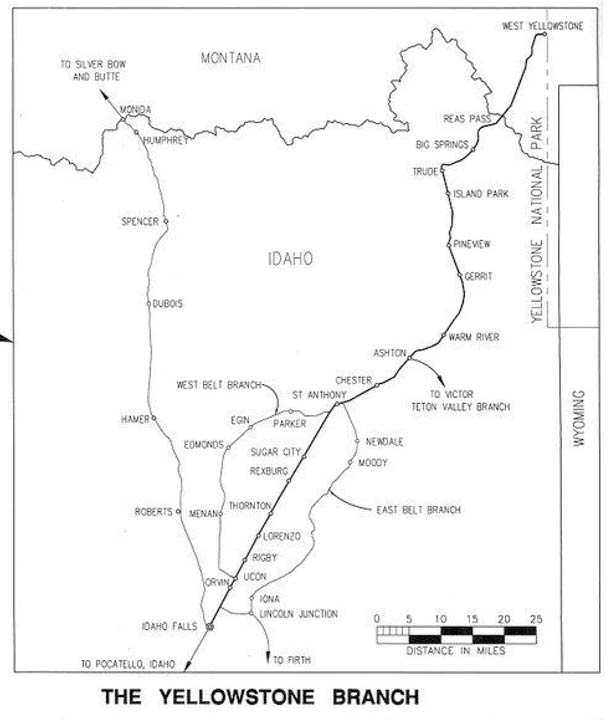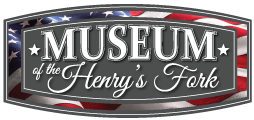In 1872, Yellowstone became the United State’s first national park. Initially, visitation to the park was minimal- only about 1,000 visitors annually due to its remote location and difficult access. Very early on, this access was dramatically improved as railroads viewed rail service to Yellowstone as a boon for their development.
In 1905, E. H. Harriman, president of Union Pacific Railroad, traveled through Yellowstone National Park to meet with officials from Northern Pacific Railroad. They likely took the main tour loop through the park, stayed at the finest hotels throughout the park, and discussed the growing needs of the increasing numbers of park visitors. Following his visit to the park, Harriman ordered the construction of a rail line from St. Anthony, Idaho to the park’s western border in Montana. This line was to be managed by Oregon Short Line Railroad, a subsidiary of Union Pacific Railroad.
Work on grading and laying rails began late in 1905. By January of 1906, the entire alignment for the railroad from St. Anthony to West Yellowstone was established. Shortly thereafter, the site of the station grounds for the rail terminal was proposed for a location in Madison Forest Reserve (now Custer Gallatin National Forest), next to Yellowstone National Park’s western boundary.
Railroad workers had completed over half of the 70 miles of rail line between St. Anthony and West Yellowstone by June of 1907. Preparation of the rail bed was done from both ends of the line. Ties and rails were laid only from the south end since the train coming from St. Anthony was used to deliver these items.
The final line was laid next to the western park boundary on November 12, 1907. Passenger service did not start to West Yellowstone, then known as Riverside and later as Yellowstone, until the following spring. The first passenger train arrived in West Yellowstone (Riverside) on June 11, 1908. A wooden depot and a few businesses greeted the first visitors. Now that the rail line was complete, Oregon Short Line turned its attention to constructing facilities for train operations and passenger services at the terminus of the new Yellowstone Branch.
Train service to West Yellowstone was limited to the months of June to September as the lines between
Ashton and West Yellowstone were not kept open during the winter due to heavy snowfall. Each year, starting in March, Oregon Short Line began the Spring Campaign to clear snow from the tracks. Train engines equipped with snow blowers and rotary plows were used for this monumental effort.
In 1907, the year before passenger service was initiated to West Yellowstone, 4,105 people entered Yellowstone National Park through the west entrance. In 1908, the year train service began, this number reached 7,172, and by 1912, it was 10,783. In 1915, 32,551 people came through the west entrance, with 29,706 arriving by rail. World War I impacted park visitation, with 1919 figures for the west gate totaling 23,558, and only 8,897 arriving by rail. Once Oregon Short Line’s Yellowstone Branch opened to passenger service in 1908, it quickly became the most popular access point to Yellowstone National
Park, garnering over 50% of all train passengers coming to the park.






